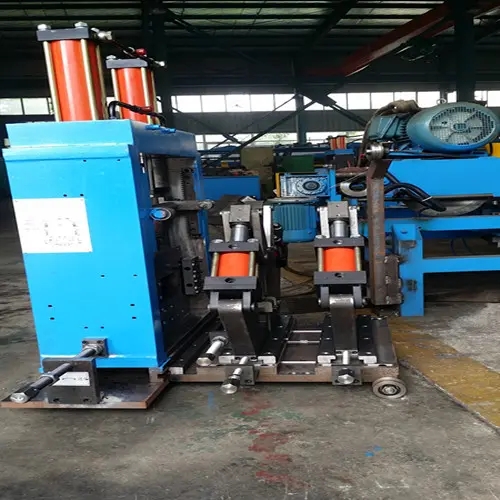
The Evolution and Significance of Steel Tube Mills
Steel tube mills play a pivotal role in the manufacturing industry, enabling the production of a wide array of steel tubes and pipes used in various applications, ranging from construction to automotive and energy sectors. The evolution of steel tube mills reflects significant technological advancements, economic strategies, and the increasing demands of modern society.
Historically, the production of steel tubes has its origins in the mid-19th century when the industrial revolution necessitated stronger and more reliable materials for infrastructure and machinery. Initially, tubes were produced through labor-intensive methods, involving the forging and bending of solid bars. However, as the demand for steel tubes surged, manufacturers sought more efficient processes. This led to the development of the seamless tube process, wherein solid steel billets are heated and then pierced to form a hollow tube, thus eliminating the need for joints and providing enhanced structural integrity.
With the advent of modern steel tube mills, the production process became significantly streamlined. Today’s mills utilize advanced technology such as Electric Resistance Welding (ERW) and Submerged Arc Welding (SAW) to create high-quality, durable tubes with various diameters and wall thicknesses. These processes involve the formation of flat steel sheets into tubular shapes, followed by welding the edges together, which is both efficient and cost-effective. ERW tubes, for instance, are widely used in structural applications due to their excellent strength-to-weight ratio.
The significance of steel tube mills can be observed across various sectors. In construction, steel tubes are essential components in the frameworks of buildings, bridges, and other infrastructures. Their resistance to corrosion, ability to withstand high pressures, and flexibility make them ideal for both structural and ornamental purposes. In the automotive industry, steel tubes are crucial for manufacturing parts like chassis and exhaust systems, contributing to vehicle safety and performance.

Moreover, the energy sector relies heavily on steel tubes for oil and gas pipelines that transport resources across vast distances. The durability and reliability of these tubes ensure that essential materials reach their destinations safely and effectively, supporting global energy needs. Additionally, with the rise of renewable energy technologies, steel tubes are increasingly used in wind energy applications, solar panel installations, and other sustainable solutions.
The environmental impact of steel tube mills is also a growing concern in today’s eco-conscious world. As production processes evolve, efforts are being made to adopt greener practices. Many mills are investing in technologies that reduce waste, minimize energy consumption, and recycle by-products. For example, some mills are exploring electric arc furnaces (EAFs) that use scrap steel as a primary input, further decreasing the carbon footprint associated with traditional steel production.
The global market for steel tubes continues to expand, driven by urbanization, industrial growth, and technological advancements. As countries like India and China develop rapidly, the demand for infrastructure and industrial products surges, highlighting the need for innovative solutions in steel tube manufacturing. Additionally, the advancement of smart manufacturing technologies, including automation and data analytics, promises further improvements in efficiency and product quality, ensuring that steel tube mills can meet future demands.
In conclusion, steel tube mills are integral to the modern manufacturing landscape, providing essential materials that support various industries. Their evolution from traditional methods to advanced technologies reflects broader economic trends and societal needs. As the world continues to change, steel tube mills will remain at the forefront of innovation, adapting to new challenges and striving for sustainability in a rapidly evolving environment. Through ongoing development and commitment to quality, these mills are poised to play a critical role in shaping the future of construction, energy, and beyond.